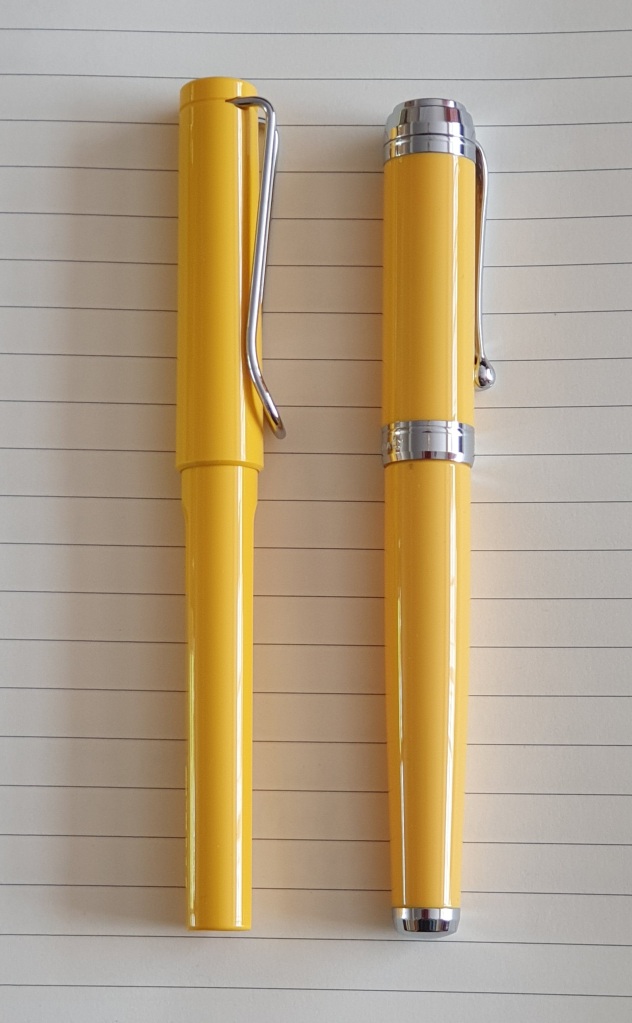A few weeks ago I first noticed a new Parker pen called the Vector XL, in my local WH Smith at London’s Brent Cross shopping centre, in a range of colours. I did not buy one immediately, but whilst on holiday recently, checked out branches of WH Smith in other towns that we visited, to see whether they had them. I did not succeed in finding one until back home in London again.
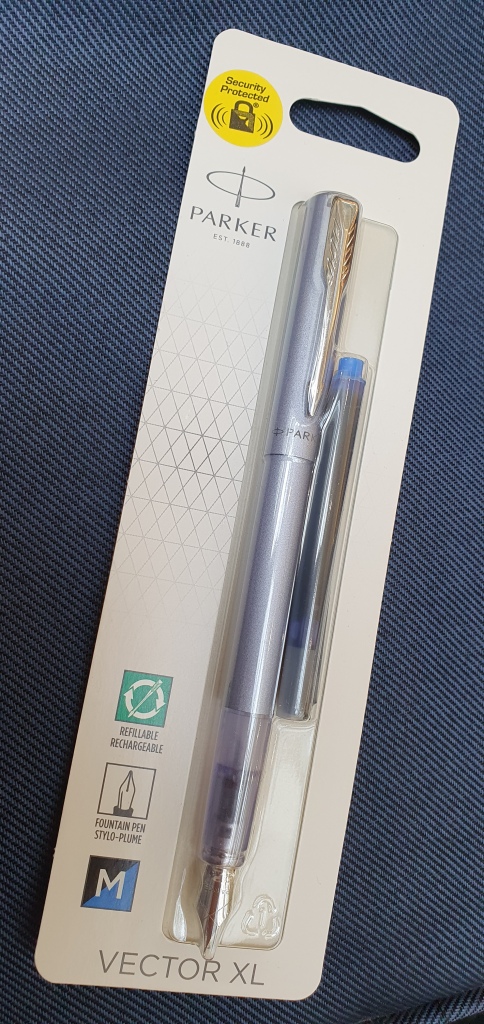
I have always had a soft spot for Parker fountain pens, ever since I was a young child. I know that they are now made in China and for several years my attention has been diverted by numerous brands from Germany, Italy, Japan, USA, and other countries, brands that I would have had little or no awareness of as a child, However there is still a certain nostalgia in revisiting Parker, the brand I idolised in my younger days.
With that background, and being curious to try this new release, I took the plunge and bought one. There were four colours to chose from. Teal, Lilac, black or Silver-Blue. I narrowed these down to Teal and Silver Blue and sought advice from a nearby member of staff who was refilling the shelves. His response was to pick the Silver Blue saying “It matches your shirt”, which indeed it did. He then added “I’m not the person to ask – I go for black everything” which was evidenced by his attire of black trousers and tee shirt. I was coming down in favour of the Silver Blue as well, as looking a little more adult than the Teal perhaps.

I was aware that the pen was available for about a third less from Cult Pens, but opted for the bricks and mortar buying experience, although this was fairly impersonal at a self-service checkout till.
Sitting down outside the shop I opened the blister pack. The pen felt quite nice, with a matte, metallic finish. The cap finial contains a shiny metal disc, featuring the Parker logo. There is a Parker arrow clip. There is no cap ring but the name Parker stands out more legibly against the Silver Blue background than on the Teal.
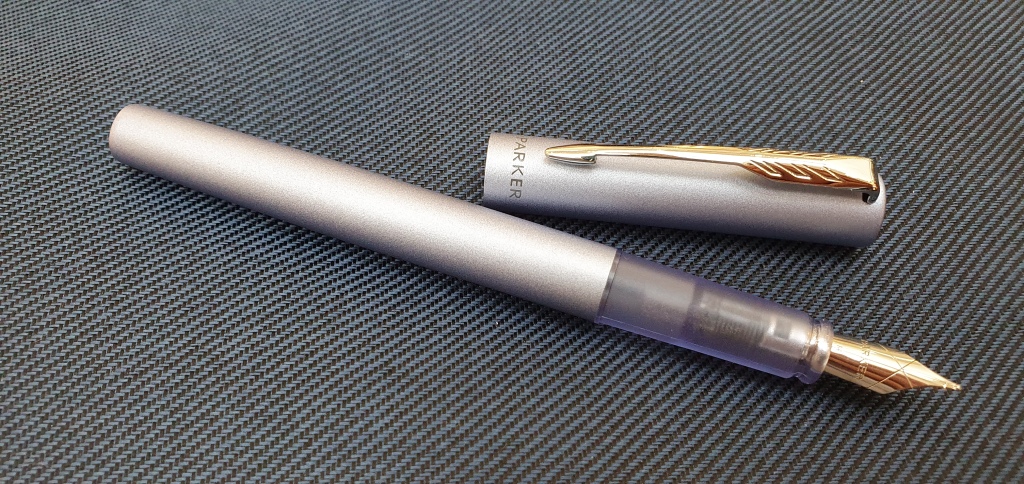
The cap snaps on and off firmly. The section is of a matching but transparent coloured plastic through which you can see the base of the nib and the nozzle for the cartridge. Once you insert a cartridge, you can see the first centimetre of it through the section. Crucially for me, the section feels comfortable and just slightly textured.
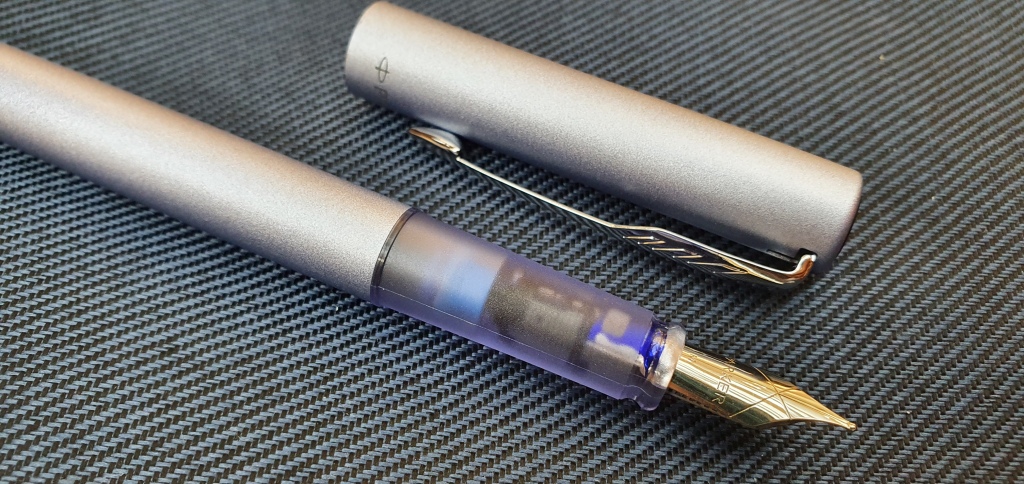
The pen comes with a black and a blue cartridge of Parker Quink ink. I popped in the blue one, omitting the flushing stage as I was still in the shopping centre. Immediately, I could see ink seeping down through the feed and within a few shakes the pen was writing.
Initial impressions were favourable! The large, traditional shaped nib seemed an improvement on the old Vector and I preferred the girth of the XL model. There is no breather hole. The nib does have a large blob of tipping which is not flattened on the face (as it would be on a Montblanc at twenty times the price). From the naked eye, the nib looked to be in good order and it wrote smoothly and well. For a medium nib, the line is perhaps closer to a broad and may be too wide for some users but I was very happy with it. There was some line width variation between the down strokes and the cross strokes. Also a fine line was possible when “reverse writing” – using the opposite side of the nib.

Likes:
- Attractive and robust aluminium finish;
- The grip section is reasonably comfortable and not too slippery and not faceted. It feels nicer than the black plastic used on the otherwise very similar Waterman Allure;
- The coloured, transparent section adds interest and is unusual for a Parker; it will also serve as an ink window;
- Smooth, rounded nib, good for under or over-writing, with good ink flow right “out of the box”;
- Decent length: 12.5cm uncapped, long enough to use unposted. The cap does post securely if you want it to, but makes the pen 16cm long and a bit unwieldy;
- There may (I hope) be a production date code on the moulded plastic barrel threads (rather than the barrel itself): mine says “U” which I think would denote 2021, if this is pursuant to Parker’s “QUALITYPEN” system of identifying the year. There is also a figure 5, but this may just be a part number.
- The XL size is to be welcomed: the original Vector felt too slim.
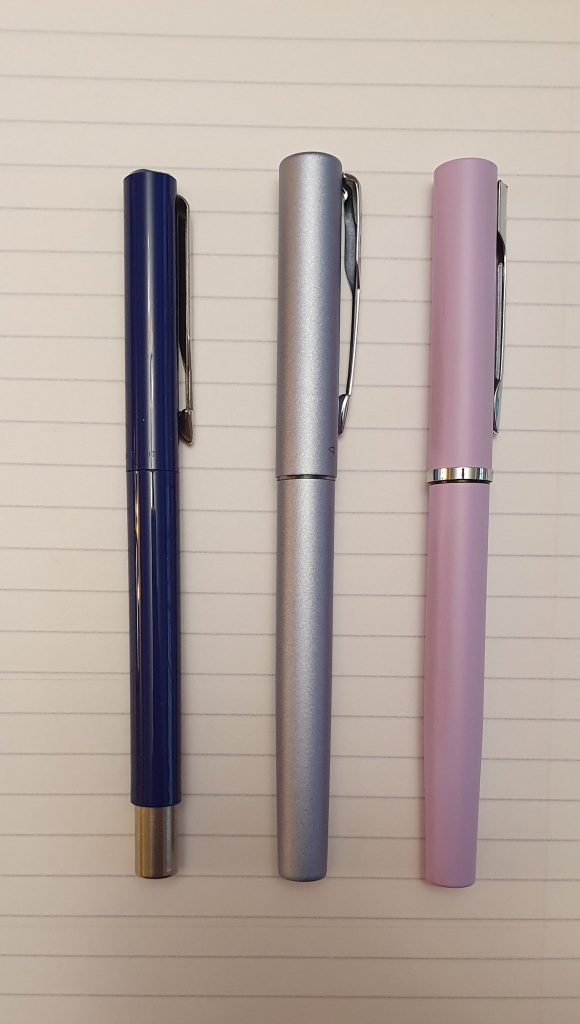
Dislikes:
- For its price, there seems little to criticise. There is no converter included, although you get two cartridges. My only concern, and something which I had anticipated, is that the cap is not airtight (you can blow air through it), which I think is an anti-choking safety feature but I wonder whether this will lead to ink evaporation and hard starts. It is early days and I will watch for this;
- Parker’s proprietary cartridges can be a bit pricey (e.g. £4.99 for a pack of 5 in some places – particularly annoying if ink evaporates from the cap, which I hope it won’t), although you can refill the cartridges or use a converter.
All in all I am very happy with this, as a convenient and robust, low cost every day carry pen to use when out and about.
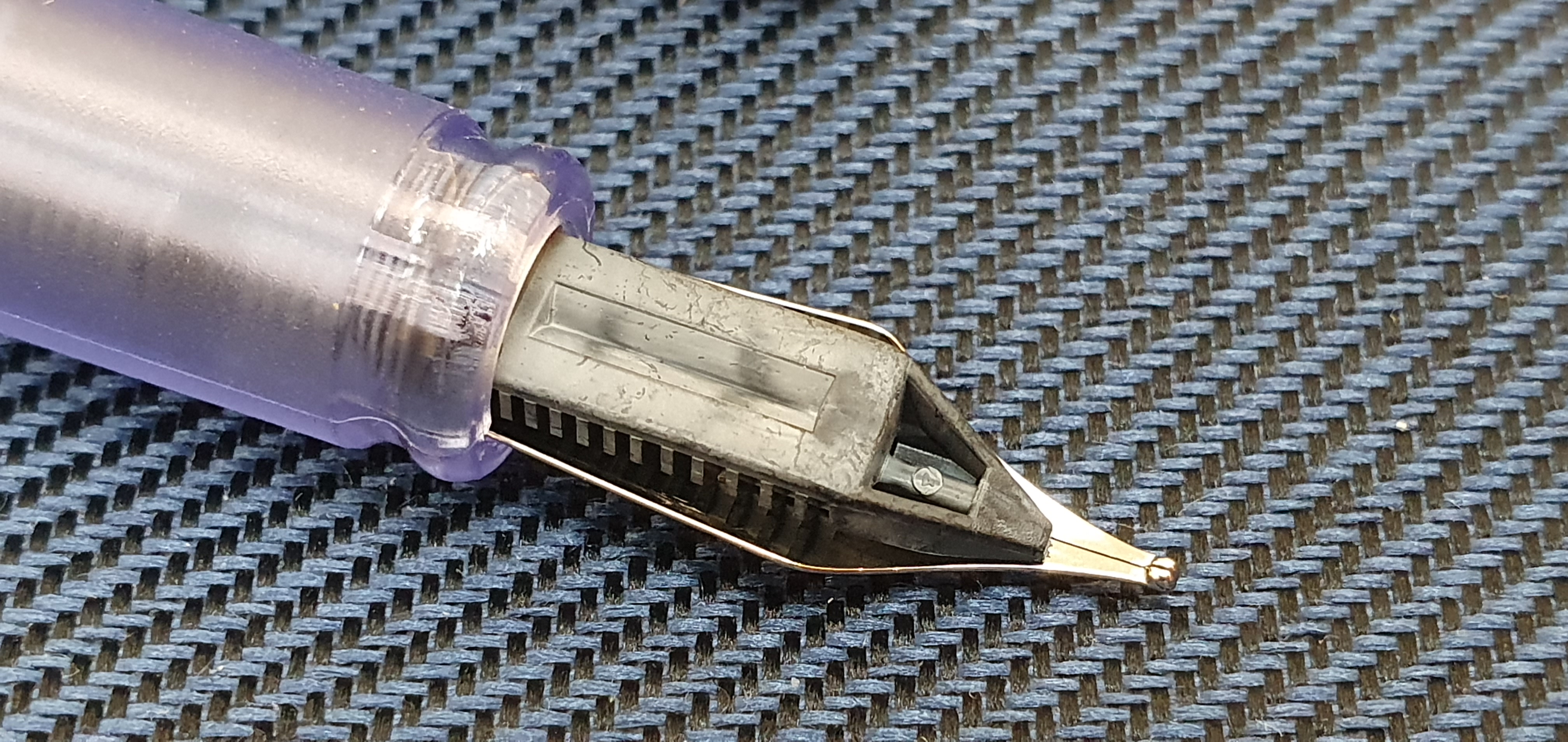
Edit: 24 July 2022: When I wrote this post a month ago, expressed a concern that the pen might suffer from ink evaporation and hard starts as the cap seemed not to be airtight. Well I am happy to report that a month on, the pen does not appear to have lost any significant or noticeable amount of ink due to evaporation and has not suffered from hard starts either. And this includes a week in which London has seen record-breaking temperatures, reaching 39 degrees.
This is good news for anyone who is thinking of buying one of these pens, who might have been worried about potential hard starts. As the pen is metal bodied, yet very light, and writes smoothly and reliably it makes a good pen to carry in a shirt pocket when out and about.











